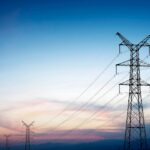
Links and Research related to our Industry.
 Coolfactor has a number inherit unique advantages that apply to the world of indoor agriculture. For example, the dual path system allows you to leverage the outside environment without affecting the gaseous mix of air inside. Why is this important? Plants can yield up to 30% more when the air is enriched with CO2. Think of this way, during the Jurassic period both animals and plants were much larger and the atmosphere had nearly three times the amount of CO2 as it currently does. What does this have to do with Air Conditioning, you say? Indoor grow facilities use artificial light to precisely illuminate their canopy. These lights generate copious amounts of heat and requiring substantial cooling year around. So lets say your facility is located in a cold environment or it’s a cool season or you run your lights at night. Bottom line is it’s cold enough outside to cool the indoor canopy. However if you were to exchange the outside cool air (400-500 ppm CO2) with the heated inside (1,200 – 1,500 ppm of CO2) air you would evacuate and lower the mix of CO2, thus making this a loosing proposition. Unless you were using CoolFactor which can leverage the outside temperature without affecting CO2 levels. Note, plants can only ingest CO2 when the lights are on, therefore heat is being put into the canopy space. This a link to the state of indoor agriculture.
Coolfactor has a number inherit unique advantages that apply to the world of indoor agriculture. For example, the dual path system allows you to leverage the outside environment without affecting the gaseous mix of air inside. Why is this important? Plants can yield up to 30% more when the air is enriched with CO2. Think of this way, during the Jurassic period both animals and plants were much larger and the atmosphere had nearly three times the amount of CO2 as it currently does. What does this have to do with Air Conditioning, you say? Indoor grow facilities use artificial light to precisely illuminate their canopy. These lights generate copious amounts of heat and requiring substantial cooling year around. So lets say your facility is located in a cold environment or it’s a cool season or you run your lights at night. Bottom line is it’s cold enough outside to cool the indoor canopy. However if you were to exchange the outside cool air (400-500 ppm CO2) with the heated inside (1,200 – 1,500 ppm of CO2) air you would evacuate and lower the mix of CO2, thus making this a loosing proposition. Unless you were using CoolFactor which can leverage the outside temperature without affecting CO2 levels. Note, plants can only ingest CO2 when the lights are on, therefore heat is being put into the canopy space. This a link to the state of indoor agriculture.
 The second largest consumer of fresh water just behind agriculture is electricity production! When evaluating the environmental impact of any electrical device this factors in heavily. As an example in our home state of Nevada we consume 7.25 gallons (27.4 L) of water for every KWH of electricity produced. So inefficient systems that require huge amount electricity waste large amounts of water. Consider this example; a typical 20 ton conventional air conditioning system employed in a green house will consume about 792,00 gallons or 3,000,000 liters of water annually in Nevada. Here’s a link that has a state by state breakdown of water consumed in energy production. Water & Power Production.
The second largest consumer of fresh water just behind agriculture is electricity production! When evaluating the environmental impact of any electrical device this factors in heavily. As an example in our home state of Nevada we consume 7.25 gallons (27.4 L) of water for every KWH of electricity produced. So inefficient systems that require huge amount electricity waste large amounts of water. Consider this example; a typical 20 ton conventional air conditioning system employed in a green house will consume about 792,00 gallons or 3,000,000 liters of water annually in Nevada. Here’s a link that has a state by state breakdown of water consumed in energy production. Water & Power Production.
 In 2018 the air conditioning market was valued at $102 billion and projected to be over $179 billion by 2025. The ever increasing population , worldwide rise of the middle class and global warming are the primary catalyst. GVR Research
In 2018 the air conditioning market was valued at $102 billion and projected to be over $179 billion by 2025. The ever increasing population , worldwide rise of the middle class and global warming are the primary catalyst. GVR Research
 Presently the world has 1.2 billion air conditioning units installed and it’s expected to rise to 4.5 billion by 2050. Cooling our air currently accounts for 10% of the worlds electricity. This exponential growth is unsustainable to worlds power grids. So why is that so many industries have seen tremendous strides in efficiency, like lighting. Yet the HVAC world is bogged down in corporate inertia. The status quo is harming the planet and it’s time to do something about it. Read More
Presently the world has 1.2 billion air conditioning units installed and it’s expected to rise to 4.5 billion by 2050. Cooling our air currently accounts for 10% of the worlds electricity. This exponential growth is unsustainable to worlds power grids. So why is that so many industries have seen tremendous strides in efficiency, like lighting. Yet the HVAC world is bogged down in corporate inertia. The status quo is harming the planet and it’s time to do something about it. Read More